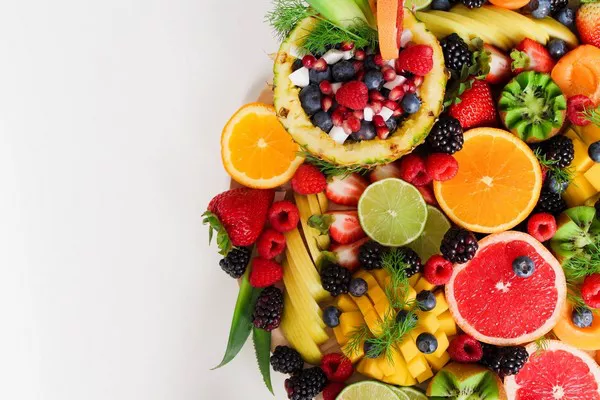Latex allergy is a growing health concern, especially for individuals frequently exposed to natural rubber latex in healthcare or occupational settings. This allergy occurs when the immune system identifies proteins in natural rubber latex as harmful, triggering a range of symptoms from skin rashes to severe anaphylaxis. While avoiding latex products is the most obvious strategy for managing this condition, few people are aware that certain food allergies can also elevate the risk of developing a latex allergy. Known as latex-fruit syndrome, this cross-reactivity between latex and specific fruits and vegetables complicates allergy management and requires a deeper understanding of the body’s immune responses.
The phenomenon arises from the immune system mistaking similar protein structures in unrelated substances as threats. This means that individuals who are allergic to particular foods may have an increased chance of developing latex sensitivity due to the shared protein characteristics. The most commonly implicated foods include bananas, avocados, kiwis, chestnuts, and papayas, but the list extends to other fruits and even vegetables. Understanding the connection between food allergies and latex allergy not only aids in early identification and prevention but also offers a clearer path to safer lifestyle choices. By exploring this connection in detail, we can better protect at-risk individuals and improve overall allergy awareness.
The Immune System Plays a Central Role in Allergy Cross-Reactivity
At the core of allergic reactions is the immune system, which is designed to defend the body against harmful invaders like viruses and bacteria. However, in individuals with allergies, the immune system becomes overly sensitive and begins to identify harmless substances—such as latex proteins or food components—as dangerous. This response leads to the release of histamines and other chemicals that cause symptoms like swelling, itching, sneezing, or worse. When two substances have similar protein structures, the immune system may mistake one for the other, triggering cross-reactivity.
This cross-reactivity forms the basis of latex-fruit syndrome. Individuals allergic to certain plant-derived foods often show sensitivity to latex due to the presence of structurally similar proteins known as class I chitinases and profilins. These proteins are common in both natural rubber latex and certain fruits and vegetables. Because of this, a person allergic to foods like kiwi or avocado might experience a reaction when exposed to latex gloves or balloons, even if they had no previous contact allergy. This misidentification can lead to unexpected allergic responses and requires careful management of both food and environmental exposures.
Bananas Share Key Proteins With Natural Latex
Bananas are one of the most well-known fruits associated with latex-fruit syndrome. They contain proteins that closely resemble those found in natural rubber latex, particularly hevein-like proteins, which are major allergens in latex. For individuals with a banana allergy, eating the fruit can cause symptoms ranging from mild oral itching to more serious reactions such as swelling of the lips, hives, or even gastrointestinal distress. This same sensitivity can translate into a latex allergy if the immune system begins recognizing latex proteins as similar threats.
The connection between bananas and latex allergy has been confirmed by numerous studies. People who have been diagnosed with a latex allergy often report a history of adverse reactions to bananas. In some cases, banana sensitivity may even precede latex sensitivity, acting as a warning sign for future allergic complications. Due to this strong link, individuals who react to bananas should be cautious with latex exposure and consider allergy testing to assess their risk. Early intervention can prevent severe allergic episodes and support better overall management of their condition.
Avocados Pose a Risk Due to Latex-Like Enzymes
Avocados are another food strongly associated with latex-fruit syndrome. The creamy green fruit contains enzymes and proteins that closely mirror those in natural latex. Individuals with avocado allergies may experience symptoms like oral itching, throat tightness, or hives shortly after consumption. In some cases, avocado sensitivity may be subtle and only reveal itself after multiple exposures. However, when combined with latex sensitivity, the risk of severe reactions can increase significantly.
This connection is especially concerning for people who work in healthcare, food preparation, or any field involving frequent latex contact. A person who eats avocados regularly and begins showing mild symptoms may overlook them until a more serious latex reaction occurs. By understanding the relationship between avocado allergies and latex allergy, individuals can make informed choices about what they consume and what materials they use. In clinical settings, healthcare providers should inquire about food allergies when assessing latex risk to ensure comprehensive patient care.
Kiwis Contain Profilins That Trigger Latex Reactions
Kiwi fruit, with its bright green flesh and tiny black seeds, is another culprit in latex-fruit syndrome. Kiwis are rich in profilins, which are a family of plant proteins that also appear in latex. For individuals with kiwi allergies, eating the fruit can cause immediate discomfort, including itching or burning sensations in the mouth, swelling, or even systemic reactions like abdominal cramps or respiratory symptoms. When such individuals come into contact with latex, they may experience similar or more intensified symptoms due to the immune system’s recognition of profilin-like structures.
The overlap between kiwi and latex allergens is well-documented. Patients with confirmed latex allergies are often advised to avoid kiwi due to the high probability of cross-reactivity. This becomes especially important in environments like hospitals, where latex gloves and medical equipment are common. An unsuspecting exposure could result in a serious allergic event, particularly for those already sensitized to kiwi. Recognizing this risk enables proactive measures, such as switching to latex-free products and seeking medical advice when food allergies are present.
Chestnuts Contain Compounds That Mimic Latex Allergens
Chestnuts, particularly the European variety, are among the few nuts strongly associated with latex allergy. Unlike tree nuts such as almonds or cashews, chestnuts contain specific proteins that structurally resemble those found in latex. When consumed by sensitive individuals, chestnuts can provoke a range of allergic symptoms, including digestive upset, skin rashes, and respiratory distress. These reactions often mirror those triggered by latex, highlighting the close molecular relationship between the two.
People with chestnut allergies may not immediately connect their symptoms to latex, especially if the reactions seem food-related. However, if they also experience discomfort when using latex gloves or handling rubber bands, it may signal a deeper issue. Medical professionals often consider chestnut sensitivity a strong predictor of latex-fruit syndrome. For this reason, it is critical to monitor allergic responses to chestnuts and assess the broader risk they pose. Being informed about this connection empowers individuals to take preventive actions and reduce the chances of unexpected allergic episodes.
Papayas Contribute to the Risk Through Enzyme Cross-Reactivity
Papayas are tropical fruits known for their digestive enzyme, papain, which is widely used in food processing and meat tenderizing. This enzyme shares similarities with latex proteins and can trigger allergic reactions in susceptible individuals. Symptoms of papaya allergy may include itching in the mouth and throat, skin eruptions, or even difficulty breathing. Because papain is also present in some commercial products like cosmetics and pharmaceuticals, the risk of unintentional exposure is heightened.
For those with latex sensitivity, papaya consumption can lead to heightened immune responses due to cross-reactivity. This makes it important for patients with known latex allergy to avoid not only the fruit but also products containing papain. In medical settings, papain-containing treatments should be replaced with safer alternatives to avoid triggering allergic responses. The relationship between papayas and latex allergy serves as a reminder that food-related allergens can have far-reaching consequences when they overlap with common materials in daily life.
Other Fruits and Vegetables Can Also Pose a Risk
While bananas, avocados, kiwis, chestnuts, and papayas are among the most common triggers, other foods have also been implicated in latex-fruit syndrome. These include tomatoes, potatoes, peaches, melons, and figs. Though the cross-reactivity in these foods may be less pronounced, they still share certain protein structures with latex and can provoke allergic reactions in sensitive individuals. The risk is particularly notable in people who already have multiple food allergies or a strong history of allergic conditions.
Monitoring one’s reaction to a variety of plant-based foods can provide clues to underlying sensitivities. If eating certain fruits consistently results in mouth tingling or skin irritation, it may be worth investigating possible cross-reactions with latex. For people at higher risk—such as healthcare workers or those with frequent latex exposure—it’s important to recognize the early signs and speak with an allergist. Taking action early can prevent more serious allergic events and lead to safer food and lifestyle choices.
Early Recognition and Testing Help Prevent Complications
The key to managing latex-fruit syndrome lies in early recognition and accurate diagnosis. Many people with food allergies do not realize they may be at risk for latex allergy, especially if their symptoms seem limited to eating certain fruits. However, as exposure to latex increases—through gloves, medical procedures, or even household items—so does the risk of a severe allergic event. Diagnostic tests, including skin prick tests and blood tests for IgE antibodies, can help confirm cross-reactivity and guide management.
People with known allergies to bananas, avocados, kiwis, chestnuts, or papayas should inform their doctors, especially before undergoing medical procedures or surgeries. Latex-free alternatives should be requested for gloves, catheters, and other supplies. Awareness campaigns in healthcare settings have helped reduce latex-related complications by promoting the use of synthetic materials. For individuals with overlapping food and latex sensitivities, these precautions can make a critical difference in their health outcomes.
Prevention Strategies Focus on Avoidance and Substitution
Preventing latex allergy in at-risk individuals begins with minimizing exposure. This means avoiding not just latex-containing items but also foods that can trigger cross-reactivity. Choosing latex-free gloves, using silicone-based medical products, and carefully reading product labels can reduce accidental contact. In terms of diet, identifying and avoiding problematic fruits and nuts is essential. Keeping a food diary can help track patterns and uncover hidden triggers.
Education is also vital. People with latex-fruit syndrome should be aware of the symptoms of both food and latex reactions, carry antihistamines or epinephrine if prescribed, and wear medical alert bracelets if their allergies are severe. Working with an allergist or immunologist to create a personalized prevention plan can greatly improve quality of life and reduce health risks. By taking proactive steps and understanding the relationship between food and latex allergies, individuals can better navigate everyday situations and remain safe.
Related Topics


































